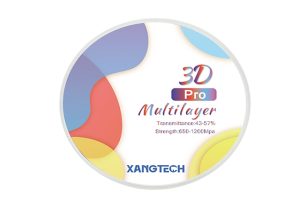Understanding Dental Milling and Its Importance
What is Dental Milling?
Dental milling is a highly precise manufacturing process utilized in the dental industry, involving the cutting, shaping, and finishing of dental materials such as ceramics and metals. This process is an integral part of modern dentistry, particularly in the fabrication of dental restorations including crowns, bridges, and implants. Employing computer-aided design (CAD) and computer-aided manufacturing (CAM) technology, dental milling enhances the accuracy of dental model production. The resulting models ensure that dental practitioners can provide tailored solutions to their patients, contributing significantly to the overall effectiveness of dental treatments.
Key Components of Dental Milling
The dental milling process comprises various components that work together to achieve precise outcomes. Central to this process is the dental milling machine, equipped with advanced software for designing and producing crowns, bridges, and other prosthetics. Alongside the machine, the selection of appropriate milling burs plays a crucial role in the fabrication process. These burs, designed with specific geometries and materials, dictate how efficiently and accurately the material is shaped. Additionally, the choice of materials used for the dental models—be it zirconia, lithium disilicate, or other ceramics—affects the overall strength, esthetic appeal, and longevity of the final dental restoration.
Significance of Accurate Dental Models
Accurate dental models are critical for the successful outcome of restorative dentistry. These models serve as the foundation for creating custom dental fixtures that must fit precisely to a patient’s unique oral anatomy. The resolution and detail captured in a dental model directly impact the strength and fit of the final restoration. Flaws in model accuracy can lead to misfits or adjustments that compromise the functionality and aesthetic outcomes of dental treatments. Thus, achieving high precision in model production through effective dental milling is essential for delivering quality care and satisfactory patient experiences.
The Role of Dental Milling Burs in Model Production
Definition and Types of Dental Milling Burs
Dental milling burs are rotary cutting tools essential for the dental milling process. They come in various shapes and designs, each suited for different applications within the model production workflow. Common types of burs include flat end, round end, and tapered shapes, allowing for diverse milling strategies to be employed. The selection of an appropriate dental milling bur can influence the cutting speed, material removal rate, and finish quality of the dental model.
Bur Materials and Their Impacts on Model Quality
The materials from which dental milling burs are constructed vary significantly and can impact the quality of the dental models produced. Common materials utilized include carbide, diamond, and various high-performance alloys, each offering specific benefits in terms of durability, cutting efficiency, and cost-effectiveness. For example, diamond-coated burs tend to provide superior results when milling harder materials like zirconia block, yielding smoother finishes and reduced chipping. Therefore, understanding the material composition of milling burs is vital for optimizing their performance and achieving high-quality dental restorations.
XANGTECH’s Contribution to High-Quality Dental Milling Burs
Overview of XANGTECH’s Product Offering
XANGTECH is a leading player in the dental milling industry, renowned for its comprehensive range of dental milling burs that excel in precision and durability. Their product line includes various shapes and sizes designed to meet the diverse needs of dental technicians and dental practices alike. With a commitment to quality, XANGTECH ensures that its burs are crafted to withstand the rigors of continuous use while maintaining consistent cutting performance for the milling of dental models.
Innovations by XANGTECH in Bur Technology
XANGTECH stands out not only for its product range but also for its innovative approaches to bur technology that enhance model production quality. The company employs advanced materials and engineering techniques in the manufacturing of its burs, which directly contributes to better performance during milling.
Advanced Materials Utilized by XANGTECH
One significant feature that sets XANGTECH apart is the use of high-grade materials in its bur production. The incorporation of specialized alloys and nanotechnology enhances the wear resistance and cutting efficiency of their burs. This ensures that dental laboratories can rely on XANGTECH burs to deliver consistent results, thereby enhancing the overall precision of dental restorations.
Precision Engineering Techniques
Furthermore, XANGTECH utilizes precision engineering techniques during the manufacturing process, ensuring that each milling bur is crafted to exact specifications. This attention to detail allows for improved ergonomic designs that enhance user experience, as well as calibrated tolerances that cater to specific milling requirements. As a result, dental professionals can achieve optimal production outcomes, ensuring that the models created are not only accurate but also conducive to higher patient satisfaction rates.
Criteria for Selecting the Right Bur
Factors to Consider in Bur Selection
Selecting the appropriate dental milling bur is an essential decision that influences the overall outcome of dental model production. One of the primary factors to consider is material compatibility. Different milling materials, such as zirconia or lithium disilicate, may require specific bur types to achieve optimal results. A bur that may perform excellently on one material might not yield the same results on another, making alignment with the material’s characteristics crucial.
Another critical factor is the desired model precision. Dental professionals must ensure that the selected bur can achieve the specific tolerances necessary for the provided application. Burs with finer tips are often used for intricate details, while larger burs may facilitate rapid material removal in less detailed areas. Therefore, understanding the level of detail required for each model can guide the appropriate bur selection.
Durability and wear resistance also play significant roles in selecting dental milling burs. Dental milling operations often involve substantial material removal rates and can expose burs to considerable wear. Selecting burs that are designed for longevity minimizes operational downtime and reduces the frequency of replacements, which, in turn, enhances cost efficiency in the long run.
Recommendations from Industry Experts
Industry experts often emphasize the importance of investing in high-quality dental milling burs. They recommend establishing a diverse inventory of burs that cater to various milling tasks and materials. For instance, including a range of shapes such as end mills, ball mills, and tapered mills can enhance operational flexibility. Experts suggest consulting detailed product specifications and manufacturer guidelines to ensure that the burs chosen are specifically designed for the types of materials and applications prevalent in the practice.
Furthermore, experts frequently highlight the significance of keeping abreast of advancements in milling bur technology. Innovations in cutting-edge materials and designs, such as those engineered by XANGTECH, receive positive endorsements for improving operational efficiency and model accuracy. Investing in this advanced technology can provide a competitive edge in a continuously evolving industry.
Benefits of Proper Bur Selection in Dental Milling

Enhanced Model Accuracy
Proper selection of dental milling burs directly leads to enhanced model accuracy. When dental technicians utilize the appropriate bur types suited for the specific materials and required details, the precision achieved in the milling process increases significantly. For instance, burs with optimized cutting geometries reduce the risk of chipping of hard materials like zirconia, resulting in smoother and more accurate models. This precision is crucial in ensuring that the final restorations fit seamlessly, minimizing adjustments and iterations during patient treatments.
Improved Efficiency and Cost-Effectiveness
Choosing the right milling bur enhances efficiency in the milling process. The compatibility of the bur with the material means that technicians can complete milling tasks more quickly, translating into increased productivity within the laboratory. Additionally, high-quality burs that maintain their cutting edges for longer periods reduce the need for frequent replacements, which ultimately leads to cost-effectiveness. By selecting burs designed for durability and efficiency, dental practices can optimize their operational workflows and reduce unnecessary expenditures on replacement tools.
Minimization of Waste and Errors
A significant advantage of effective bur selection is the minimization of waste and errors in the dental milling process. Utilizing the correct bur that is compatible with both the material and the intricacies of the model ensures a cleaner milling process, resulting in fewer botched productions and discarded materials. This precision mitigates the risks associated with human error, often resulting from improper tools being used, leading to high-quality final products that meet the standards expected in dental practices. By carefully considering bur choices, dental professionals can promote sustainable practices within their laboratories, aligning with industry trends favoring efficiency and accuracy.
Practical Tips for Maintaining Dental Milling Burs
Cleaning and Maintenance Protocols
Maintaining dental milling burs in optimal condition is vital for achieving high-quality milling results and prolonging their operational lifespan. A consistent cleaning protocol should be implemented after every use to prevent material buildup that can compromise cutting efficiency. This typically involves using ultrasonic cleaning machines that can remove debris and residue built upon the burs without causing damage. Additionally, proper storage in protective cases can minimize exposure to environmental factors, such as humidity and exposure to oils, which could accelerate wear.
Periodic inspection of the burs is also a key part of maintenance protocols. Dental professionals should routinely check the burs for signs of damage, such as chipping or dullness. Dull burs not only reduce cutting efficiency but may also increase the risk of uneven cuts, potentially compromising the quality of the dental models produced. Establishing a standardized maintenance log can help technicians keep track of usage patterns and planned maintenance actions, ensuring a proactive approach to bur care.
Replacement Indicators
Identifying the right time for bur replacement is critical for sustaining milling quality. There are several tangible indicators that suggest a milling bur may need to be replaced. One of the common signs is a noticeable decrease in cutting efficiency; if a bur struggles to cut through material as effectively as it once did, it may be time for a replacement. Additionally, visual inspections can reveal wear patterns that indicate potential failure, such as cracks forming in the bur blades or changes in the bur’s shape.
Another consideration is the frequency of use; if a bur has been used beyond its intended working life, it is prudent to retire it even if it appears to be in decent condition. The performance requirements in a dental lab may also vary based on the complexity of cases being handled. Therefore, dental technicians should pay close attention to performance feedback during milling operations to assess if burs need updating, thereby ensuring model production processes remain efficient and accurate.
Best Practices from XANGTECH for Extending Bur Life
XANGTECH emphasizes the importance of adopting best practices in the handling and usage of dental milling burs to enhance their longevity. One effective strategy is to utilize milling burs specifically matched to the materials being processed. The meticulous selection of the right bur type minimizes unnecessary wear and ensures that drilling processes remain consistent.
Moreover, XANGTECH recommends maintaining optimal spindle speeds during the milling process according to the specific bur type and material. Excessive speed can lead to premature wear, while too slow speeds may not be effective in material removal. Following these operational guidelines ensures that the burs remain effective over extended periods. Finally, utilizing XANGTECH’s burs with advanced wear characteristics can offer additional durability and longer service life, leading to exemplary outcomes in model production. Meanwhile, XANGTECH advanced porcelain furnace, designed specifically for dental laboratories and clinics. Its compact size allows it to fit seamlessly into any workspace, while clear status indicators keep users informed of its operational state.
Future Trends in Dental Milling Bur Technology
Emerging Developments in Materials Science
The field of dental milling is continuously evolving, driven by advancements in materials science that influence the design and functionality of dental milling burs. Recently, researchers have been focused on developing new composite materials and nano-structured alloys that enhance the cutting performance and lifespan of milling burs. These materials promise improved thermal stability, enabling burs to maintain their cutting edge even during intensive milling tasks without experiencing overheating.
Incorporating multifunctional coatings is another trend expected to gain traction. These coatings can provide enhanced wear resistance and minimize friction, leading to smoother milling performances across diverse materials. As these technological advancements become mainstream, dental labs will benefit from the reduced replacement rates of burs and improved outcomes in model precision.
Innovations Expected from XANGTECH
XANGTECH is at the forefront of these innovations, committed to integrating cutting-edge technologies into their product range. They are focusing on producing high-performance dental milling burs equipped with enhanced geometrical designs to optimize cutting efficiency. Concepts such as variable helix angles and blade configurations are being tested to further improve the precision in milling operations, especially in intricate dental models.
Additionally, XANGTECH is looking to incorporate intelligent manufacturing processes into their production lines, utilizing machine learning algorithms to predict bur wear patterns and optimize cutting conditions based on real-time data. This proactive approach to product development promises not only to increase the lifespan of milling burs but also to enhance dental model production efficiency, ultimately benefiting dental practitioners in their daily operations. As new materials and technologies emerge, XANGTECH continues to aim for advancements that align with the needs of modern dental labs and practitioners around the world.












